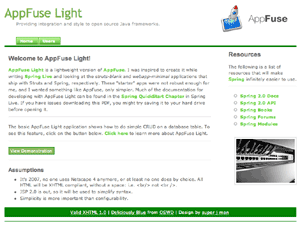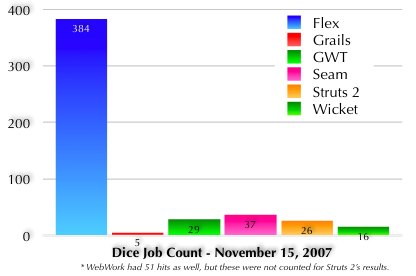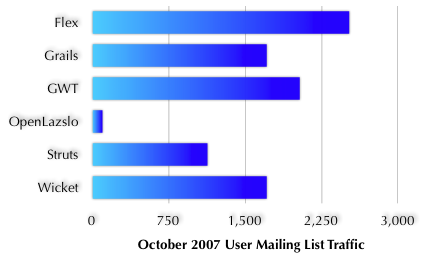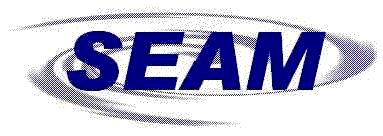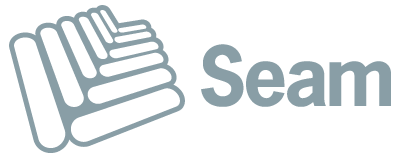AppFuse Light 1.8.1 Released: includes upgrades to Spring 2.5 and Wicket 1.3
AppFuse Light 1.8.1 is a bug fixes release that includes an upgrade to Spring 2.5 and Wicket 1.3 RC1. See the Release Notes for more information on what's changed since the last release.
What is AppFuse Light? Click here to find out.
AppFuse Light now offers 60 possible combinations for download:
- Web Frameworks: JSF (MyFaces), Spring MVC (with Ajax, Acegi Security, JSP, FreeMarker or Velocity), Stripes, Struts 1.x, Struts 2.x, Tapestry, WebWork, Wicket
- Persistence Frameworks: Hibernate, iBATIS, JDO (JPOX), OJB, Spring JDBC
If you have any questions about this release, please subscribe to the AppFuse user mailing list by sending a blank e-mail to [email protected]. You can also post questions in a forum-like fashion using Nabble: http://appfuse.org/forum/user.
If you're a developer of one of the frameworks that AppFuse Light uses - I'd love a code review to make sure I'm "up to snuff" on how to use your framework. I'm also more than willing to give commit rights if you'd like to improve the implementation of your framework.
Live demos are available at:
- Spring · Spring + Ajax · Spring + Acegi
- MyFaces + Facelets
- Stripes
- Struts 1 · Struts 2
- Tapestry
- WebWork
- Wicket
What's on tap for AppFuse Light 2.0? Here's what I'm hoping to do:
- Drop the seldom-used persistence frameworks: JDBC, JDO and OJB.
- Drop Struts 1.x and WebWork as web frameworks (replaced by Struts 2).
- Support the same persistence frameworks as AppFuse: Hibernate, iBATIS and JPA.
- Re-use appfuse-service, appfuse-hibernate, appfuse-ibatis and appfuse-jpa in AppFuse Light. I'll likely include the core classes (User, Role) since AppFuse Light is more "raw" than AppFuse.
- Require Java 5.
Let me know if you disagree with any of these items or would like to see other enhancements.


